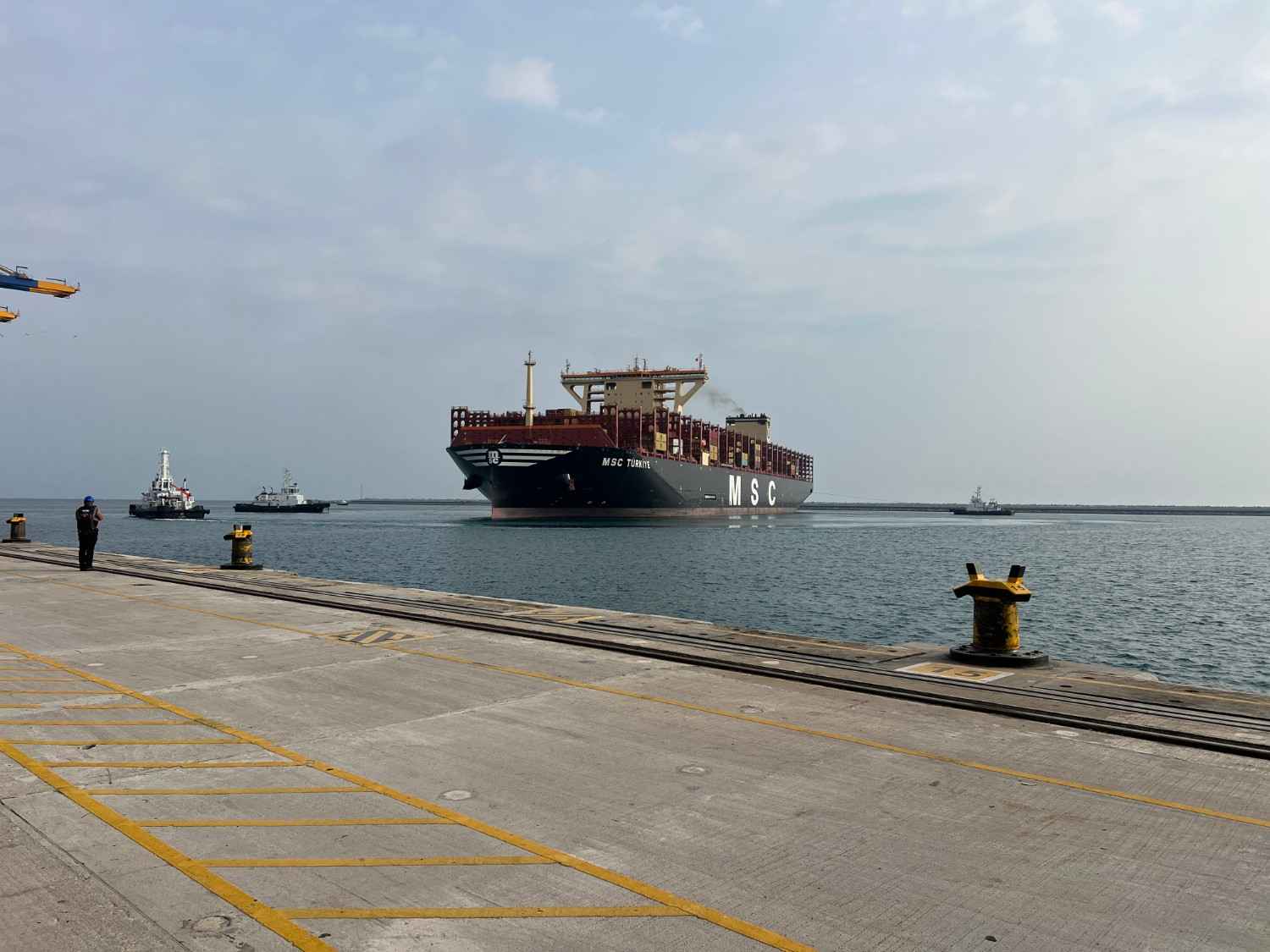Billed as one of the world’s largest and most fuel-efficient container ships, MSC T rkiye docked at the Vizhinjam International Seaport in Kerala on Wednesday. This marks the first time the giant vessel has ever docked at an Indian port.
Sources familiar with the development hailed the arrival of MSC T rkiye as a landmark event in India’s maritime history, seen as a major boost to Vizhinjam’s growing reputation as a global transshipment hub. It also highlights the port’s capability to attract ultra-large container vessels (ULCVs) from around the world.
Mediterranean Shipping Company
Operated by the Mediterranean Shipping Company (MSC), MSC T rkiye is a modern engineering marvel. The vessel measures 399.9 meters in length, 61.3 meters in width, and 33.5 meters in depth. With a capacity to load about 24,346 twenty-foot equivalent units (TEUs), it stands as one of the largest container ships ever built. Apart from its sheer size, the MSC T rkiye is distinguished by its eco-friendly design.

Engineered with a focus on fuel efficiency and reducing environmental impacts, the vessel boasts a low-carbon footprint per container, significantly reducing carbon dioxide emissions per tonne of cargo transported. Flying the Liberian flag, the cargo ship represents a major leap forward in sustainable global shipping.
Vizhinjam Port
The arrival of MSC T rkiye fits perfectly into the ambitious plan laid out by Adani Ports and SEZ Ltd (APSEZ) to transform Vizhinjam Port, founded in 2015 and operational since last year, into a major marine hub globally.
This development follows the docking of MSC Claude Girardet, another ULCV operated by MSC, at Vizhinjam last September. At the time, MSC Claude Girardet, measuring 399.99 meters in length and 61.5 meters in width with a container capacity of 24,116 TEUs, held the record as the largest container vessel to visit India until it was overtaken by MSC T rkiye.
India’s first mega transshipment container
Vizhinjam Port, operated by APSEZ, is India’s first mega transshipment container terminal. Its strategic location, just 10 nautical miles (19 km) from the busy east-west shipping channel that connects Europe, the Persian Gulf, Southeast Asia, and the Far East, makes it ideally positioned for international maritime trade.



